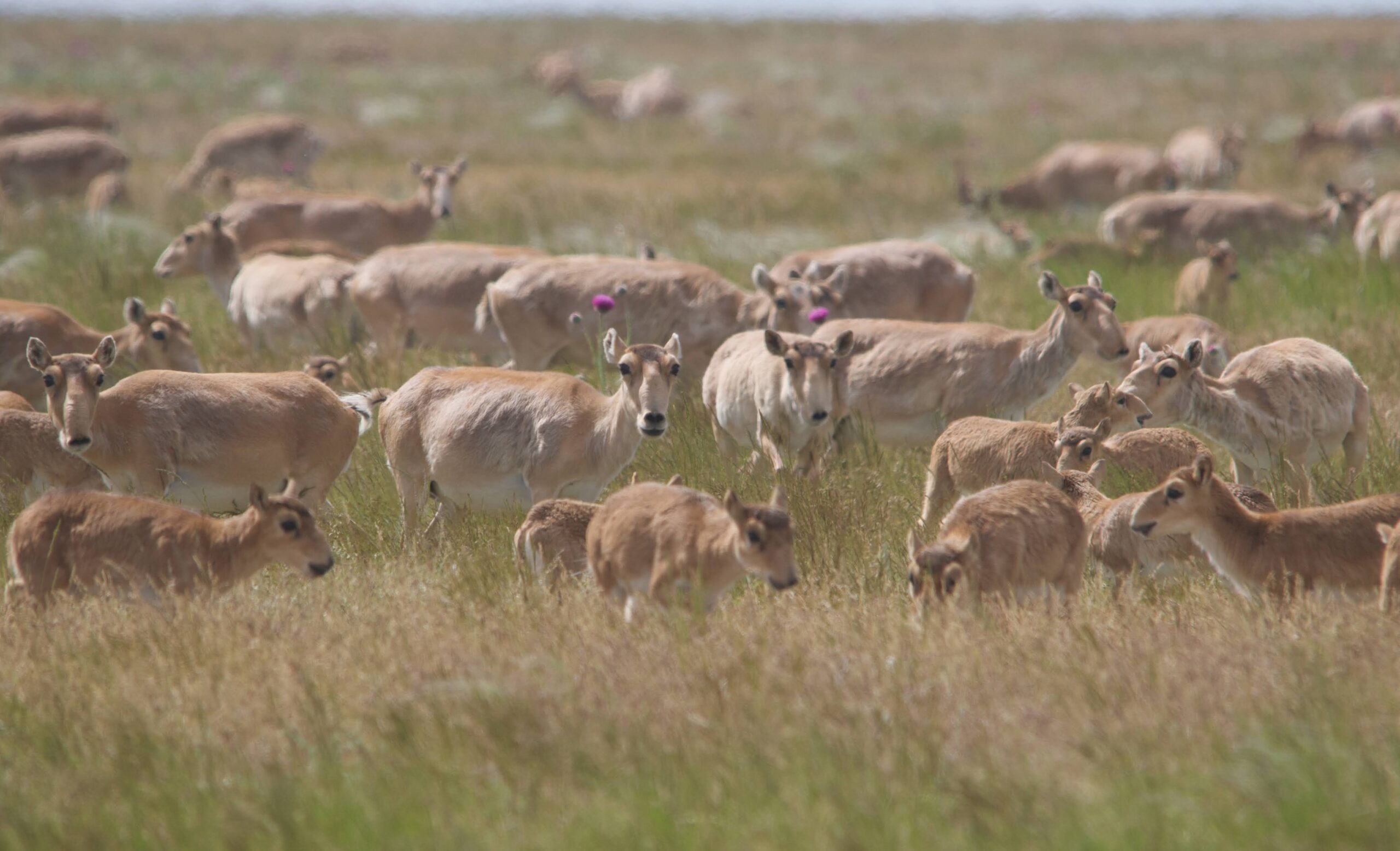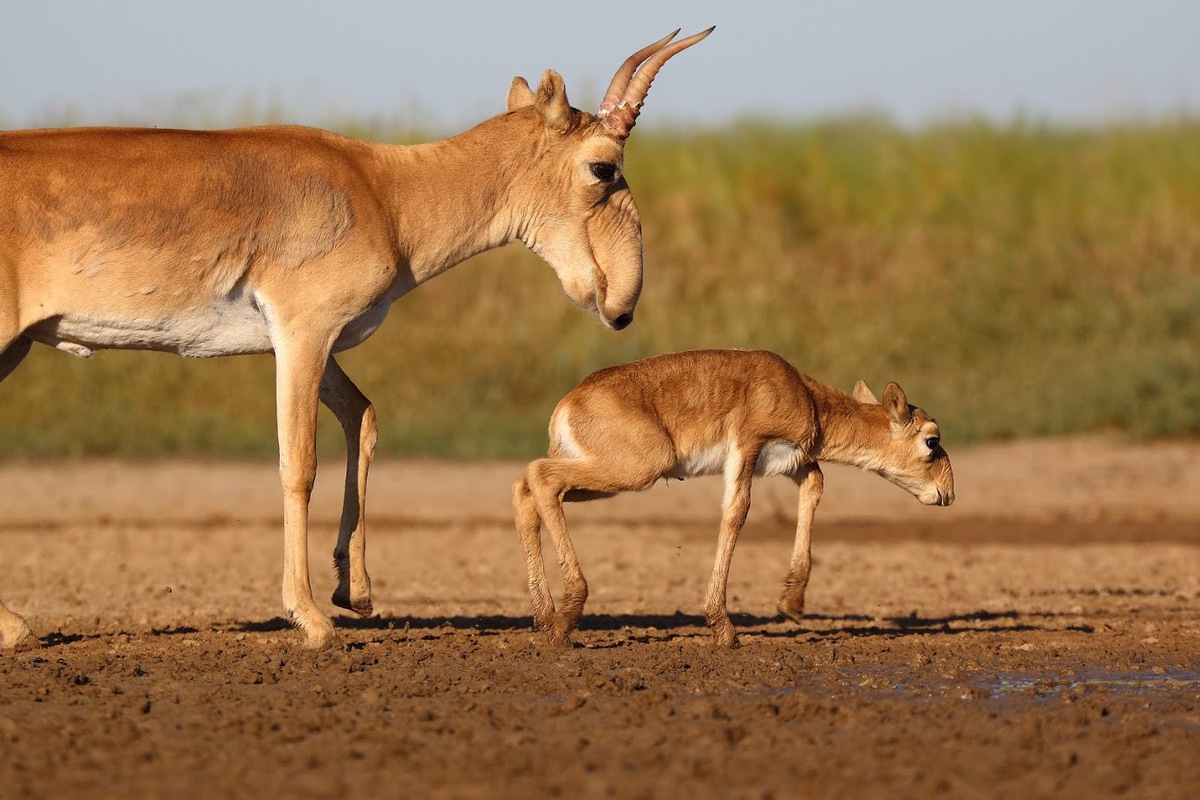ASTANA – The status of Saiga antelope (Saiga tatarica) in the International Union for Conservation of Nature (IUCN) Red List has been changed from critically endangered to near threatened on Dec. 11, marking a success in conservation efforts, announced a group of organizations involved in the effort.

Saiga herd in Kazakhstan. Photo credit: rspb-images.com
The saiga population in Kazakhstan has recovered from a perilously low estimate of 48,000 in 2005 to now over 1.9 million.
This substantial and rare positive change in global Red List status reflects the significant conservation efforts continued for nearly two decades by Kazakh and other state governments, research organizations, and national and international NGOs. They include the Saiga Conservation Alliance, the Altyn Dala Conservation Initiative, the Nature and Biodiversity Conservation Union (NABU), the Wildlife Conservation Society and the World Wildlife Fund Mongolia.
The Kazakh government has demonstrated leadership in species recovery, investing in impactful actions, including anti-poaching initiatives, robust law enforcement, and border control measures, and establishing a series of major state protected areas.
According to Amy Fraenkel, executive secretary of the Convention on the Conservation of Migratory Species (CMS) of Wild Animals, such remarkable recovery of the Saiga antelope underscores the importance of international cooperation for the conservation of migratory species.

The species’ new Near Threatened category reflects the potential for its status to deteriorate rapidly in the absence of ongoing conservation action. Photo credit: Andrey Gilev/Saiga Conservation Alliance
“Yet, as we celebrate this success, we need to continue significant conservation efforts for the Saiga, which is highly susceptible to sudden changes and whose recovery is not uniform across its range. I am confident that the work of CMS, the Saiga range states, and the many entities committed to Saiga conservation will continue to achieve positive results for this treasured species,” said Fraenkel.
The species’ new category reflects the potential for its status to deteriorate rapidly without ongoing conservation action. Conservation action is still needed to ensure that saiga antelope has a long-term sustainable future in Kazakhstan and that the smaller populations recover in Mongolia, the Russian Federation, and Uzbekistan.
The current population of saiga in Russia is 38,000, up from 4,500 in 2016, while Uzbekistan hosts an estimated 500 saiga, 200 of which were first discovered in the Aral Sea region in 2021, while human-made barriers to migration isolate the remaining 300.
A November census of the Mongolian subspecies reported a population of 15,540 saigas. There have been no instances of poaching since 2018 when the population level was 3,391.
Elena Bykova, head of the Laboratory of the Endangered Species of the Institute of Zoology at the Academy of Sciences of Uzbekistan, said that the remarkable improvement to the saiga conservation status in Kazakhstan “serves as both a beacon of hope and a call to action.”
“It is important to acknowledge that the conservation status of the species varies significantly across its range. For instance, according to the national Red Data list, the saiga is still critically endangered in Uzbekistan. The Uzbek saiga population is at a high risk of extirpation as it is separated from the larger Kazakh population by the country’s border fence, railways, and other linear infrastructure that obstruct saigas’ migratory routes and fragment the natural habitat. To restore the saiga across its entire range, we must learn from our successes in Kazakhstan while acknowledging the nuanced nature of the species’ status across different countries,” said Bykova.
The species will only be fully recovered if it regains its role in the ecosystem across its entire range, with ongoing poaching, illegal trade, disease, climate change, disturbance, and infrastructure development all posing a threat to saiga.

